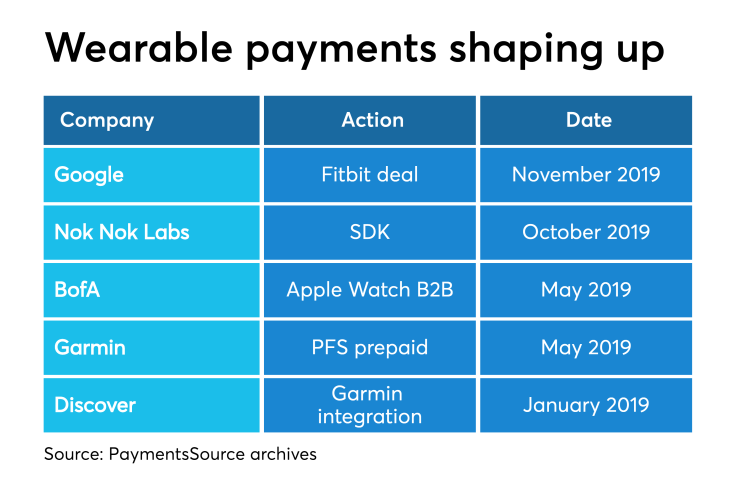Nok Nok Labs and Apple are separately trying to improve authentication techniques as smartwatch payment options stack up.
In Nok Nok’s case it has built a software development kit for smartwatches to provide FIDO-based authentication. And Apple has filed a patent application for technology that supports secure information transmission.
Both companies are responding to watches and other connected devices becoming more usable for transactions, and more distinct from other consumer gadgets.

“There is a clear trend toward putting more complexity into the smartwatches,” said Rolf Lindeman, vice president of product for Nok Nok Labs. “Consumers, particularly younger consumers, want to leave the phone in their pockets.”
By tying the technology to
"You want to do what you can to avoid any extra steps for authentication," Lindeman said.
Nok Nok was a founding member of FIDO, and has worked within the organization to add
Other financial institutions are adding wearable payments options.
And
Apple did not return a request for comment. The technology Apple’s describing could support a federated identity system, a key element of the portable, sharable
The Apple patent surrounds the use of wearables and/or smartphones as an authentication form for what could be a national ID, said Trace Fooshee, a senior analyst at Aite.
“National ID isn’t something I would have thought Apple would be into," Fooshee said. "I can see them wanting to control more of the authentication space and I think that they, along with their competitors, would be well positioned to provide platforms for authentication applications like Touch ID, Face ID and others."
Apple’s move would be similar to the other biometric authentication applications insofar as it would be a means of closing the last mile of the authentication loop but not go much further than that into the loop, according to Fooshee.
“I could even see them creating another biometric authentication application that would be similar to Touch ID and Face ID, but that is specific to the signals that Apple Watch is able to accumulate,” Fooshee said.





